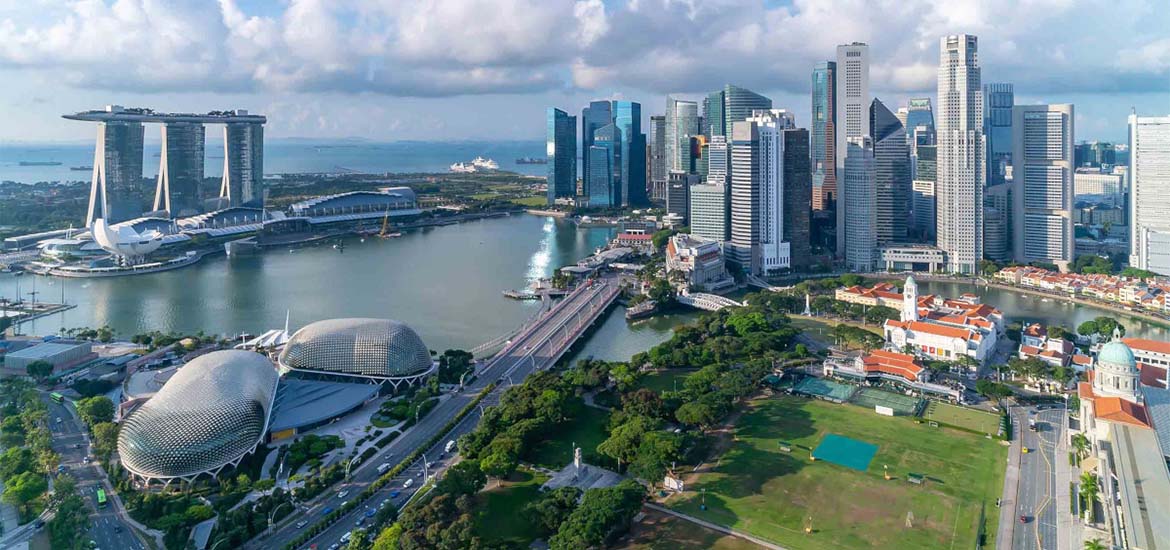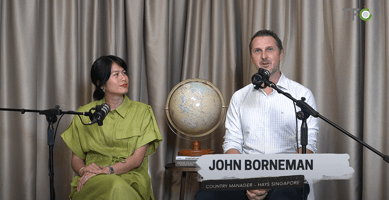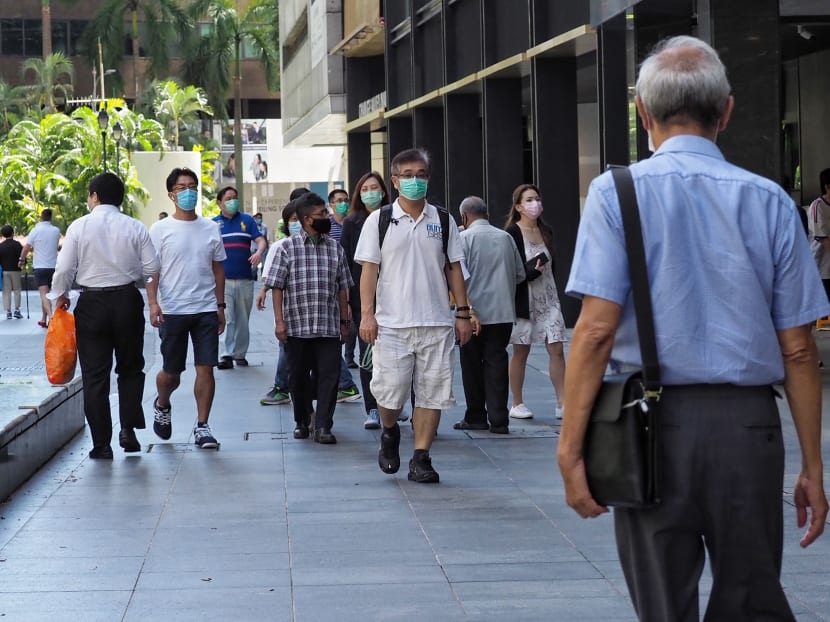From Third World to Financial Powerhouse: Singapore's Wealth Creation Journey to SG60
As Singapore approaches its Diamond Jubilee in 2025, marking 60 years of independence (SG60), the city-state stands as one of the world's most compelling wealth creation stories. From Lee Kuan Yew's prescient observation in 1957 that an independent Singapore would be a "political, economic, and geographical absurdity" to today's reality of a US$90,689 GDP per capita economy, Singapore's transformation represents perhaps the most dramatic economic metamorphosis in modern history.
Understanding this journey provides insights into sustainable wealth creation, policy innovation, and the strategic positioning that continues to drive returns in an increasingly complex global economy.

The Arithmetic of Transformation: From US$500 to US$90,000
The raw numbers tell an extraordinary story. In 1965, when Singapore gained independence, the nation's nominal GDP per capita stood at approximately US$500, placing it alongside Mexico and South Africa according to data from the Monetary Authority of Singapore. By 2024, this figure had reached US$90,689, representing a staggering 18,037% increase over six decades.

To contextualise this achievement: Singapore's GDP per capita has grown from one-third that of Western Europe in 1960 to twice as much today, according to Our World in Data. This places Singapore as the 4th highest globally by nominal GDP per capita and 2nd by purchasing power parity as of 2025 estimates.
The compound annual growth rate over this period averages approximately 10% in nominal terms during the early decades, moderating to more sustainable levels as the economy matured. For wealth managers and private investors, this trajectory demonstrates the power of consistent, policy-driven economic expansion combined with strategic reinvestment.
The Three Pillars of Economic Architecture
Manufacturing Foundation (1965-1985)
Singapore's economic miracle began with two contrarian strategic decisions that, as Ravi Menon noted in his comprehensive economic history, were "sharply at odds with the conventional economic wisdom of the time." The first was abandoning import-substitution in favour of export-led industrialisation. The second was actively courting multinational corporations as vehicles for industrial growth.
These policies yielded immediate dividends. By 1975, manufacturing's share of GDP had climbed to 22% from 14% in 1965. The economy achieved full employment, and the compositional shift within manufacturing was remarkable—from labour-intensive industries producing "matches, fish hooks and mosquito coils" to sophisticated electronics, petrochemicals, and precision engineering by the 1980s.

The BBC's analysis of Lee Kuan Yew's economic legacy captures the systematic approach: "Lee Kuan Yew's emphasis on growth, the thrust on making Singapore attractive as a destination for investment as well as the focus on drawing world class manpower; building state of the art infrastructure and excellent air and sea linkages; a low and transparent tax regime; clean and efficient bureaucracy; a strong regulatory and legal framework... have ensured Singapore's stupendous economic success."
Services Revolution (1986-2010)
The 1985 recession—the only time Singapore's domestic economy contracted whilst the global economy grew—catalysed fundamental structural reforms. This period marked the transition from manufacturing-centric to services-driven growth, with modern services' share of GDP increasing from 16% in 1965 to 28% in 2010.

The financial services sector underwent complete liberalisation in the late 1990s and early 2000s. Business services, information-communications, and entertainment services (including the strategic decision to introduce integrated resorts in 2005) created new engines of growth. This diversification proved prescient, as Singapore weathered multiple crises—the Asian Financial Crisis (1998), the dot-com collapse (2001), SARS (2003), and the Global Financial Crisis (2008)—emerging stronger after each shock.

Knowledge and Innovation Economy (2011-Present)
The current phase addresses demographic constraints through productivity-led growth. With labour force growth declining to 1% per annum by 2020, Singapore shifted to a model targeting at least 2% annual productivity growth. This transformation particularly challenged traditional service sectors heavily dependent on labour, leading to significant restructuring and technological adoption.
The emergence of Singapore as a "Global School House" and medical hub exemplifies this evolution. Traditional domestically-oriented services like education and healthcare repositioned themselves as exportable services, creating new revenue streams and employment opportunities.

The Sovereign Wealth Advantage
Singapore's wealth creation extends beyond GDP through its sophisticated sovereign wealth infrastructure. Temasek Holdings, with a net portfolio value of S$434 billion as at 31 March 2025, represents one pillar of this strategy. The fund achieved an 11.8% one-year total shareholder return, demonstrating the government's ability to generate alpha from its strategic investments.
GIC, Singapore's other major sovereign wealth fund, while less transparent about annual performance figures, continues to deliver strong long-term returns. Combined, these institutions manage over US$1 trillion in assets, providing Singapore with substantial financial firepower and investment diversification that extends far beyond the domestic economy.
For Singapore's high-net-worth community, this sovereign wealth infrastructure offers both direct benefits through superior public services and infrastructure, and indirect benefits through the government's sophisticated understanding of global investment trends and risk management.

Current Economic Dynamics and 2025 Outlook
Singapore's economic resilience continues to be tested. The economy grew 4.4% in 2024, significantly outperforming initial expectations despite global uncertainties. However, the Ministry of Trade and Industry has revised 2025 GDP growth forecasts downward to 0.0-2.0% from the earlier projection of 1.0-3.0%, reflecting global trade tensions and economic headwinds.
The Monetary Authority of Singapore's April 2025 statement reveals the careful balancing act: "For 2025 as a whole, Singapore's GDP growth is expected to slow to 0.0–2.0% from 4.4% last year. Given Singapore's high trade dependency and deep integration with global supply chains, slowing global and regional trade as well as heightened policy uncertainty will weigh on the external-facing sectors."
This moderation reflects Singapore's mature economy status and global interconnectedness rather than structural weakness. MAS Core Inflation has eased significantly to 0.7% year-on-year in January-February 2025, from 1.9% in Q4 2024, providing monetary policy flexibility.

The Next Wealth Creation Wave
Morgan Stanley's analysis suggests Singapore is entering a new era of wealth creation, with potential for household assets to nearly double in the next five years. Three key pillars drive this optimism:
Enhanced Global Hub Status: Singapore's opportunity to become Asia's leading global financial hub over the next decade, potentially closing the gap with London in global significance. The commodities trading market, already accounting for 20% of global energy and metals trade, is positioned for expansion into liquid natural gas and carbon trading.
Equity Market Reinvigoration: The government's unprecedented S$4 billion capital injection from MAS to provide market liquidity, combined with tax incentives and policy reforms, aims to transform Singapore from an "illiquid safe haven" into a dynamic listing destination. This could raise the local price-to-book value from 1.7 to 2.3 by 2030.
Technology Leadership: Singapore's early adoption of AI, autonomous vehicles, and humanoids positions it advantageously for the next technological revolution. With over 80 AI research faculties, 150 AI R&D teams, and 1,000+ AI start-ups, Singapore ranks among the top 10 AI markets globally.
Investment Implications for Sophisticated Investors
For Singapore's investment community, several strategic themes emerge from this historical analysis:
Structural Resilience: Singapore's ability to reinvent itself through multiple economic cycles demonstrates exceptional adaptive capacity. The transition from manufacturing to services to knowledge economy shows systematic long-term planning that creates sustainable competitive advantages.
Policy Innovation Premium: Singapore's willingness to implement contrarian policies—from embracing multinationals in the 1960s to introducing integrated resorts in 2005—creates first-mover advantages that generate outsized returns.
Infrastructure as Alpha Generator: The systematic investment in physical and institutional infrastructure—from Changi Airport to the legal system to sovereign wealth funds—creates compound returns that benefit all economic participants.
Global Integration Strategy: Singapore's success stems from intelligent integration with global markets rather than protectionism, suggesting continued opportunities in internationally-oriented sectors and strategies.
Risk Factors and Challenges
Even as Singapore approaches SG60 from a position of strength, several challenges merit attention from investors and business leaders:
Demographic Transition: With labour force growth now at just 1% annually, productivity gains must drive future growth. This structural shift requires continuous technological adoption and human capital development.
Global Trade Uncertainty: Singapore's high trade dependency—a source of historical strength—creates vulnerability to protectionist policies and supply chain disruptions, as evidenced by the current growth forecast revisions.
Wealth Inequality: Despite overall affluence, wealth concentration remains stubborn, with the top 1% and 10% controlling approximately 20% and 60% of total wealth respectively, creating potential social and political pressures.
Regional Competition: Singapore faces increasing competition from other Asian financial centres, requiring continuous innovation and strategic positioning to maintain competitive advantages.

Singapore's journey from third world to first represents more than historical achievement—it demonstrates a replicable model of wealth creation through strategic positioning, institutional excellence, and adaptive capacity. As the nation approaches SG60, the fundamental elements that drove six decades of success—policy innovation, global integration, infrastructure investment, and human capital development—remain intact and evolving.
For Singapore's sophisticated investor base, this transformation story offers both validation of past investment strategies and guidance for future positioning. The nation's ability to generate wealth through multiple economic cycles, leverage global opportunities whilst maintaining domestic stability, and continuously reinvent its economic model provides a compelling framework for sustained prosperity.
The path from US$500 to US$90,000 GDP per capita was neither inevitable nor accidental—it resulted from systematic, long-term strategic thinking combined with tactical flexibility. As Singapore enters its seventh decade, these same principles, applied to new challenges and opportunities, suggest the wealth creation story is far from complete.
For investors, business owners, and economic participants who understand this transformation, Singapore's SG60 milestone represents not an end point, but a platform for the next phase of wealth creation in an increasingly complex global economy.
Let us know what you think about this topic, and what do you want to hear next.
Sources:
- Monetary Authority of Singapore, "An Economic History of Singapore: 1965-2065" - Ravi Menon Keynote Address, 2015
- BBC News, "How Lee Kuan Yew engineered Singapore's economic miracle", 2015
- Morgan Stanley Research, "Singapore's Economic Growth Ushers in New Era of Wealth", July 2025
- Ministry of Trade and Industry, "Singapore's GDP Grew by 3.8 Per Cent in the First Quarter of 2025", April 2025
- Temasek Holdings, "Portfolio Performance" Report, March 2025
- Our World in Data, GDP per capita analysis, January 2025
- World Bank Data, GDP per capita statistics
- CEIC Data, Singapore Economic Indicators, 2024
You can now be our community contributor and make a pitch to have your favourite personality be on our show.
Join our community group and drop us your insights on this topic.

-4.png?width=50&name=Square%20(2)-4.png)







Let us know what you think of this post